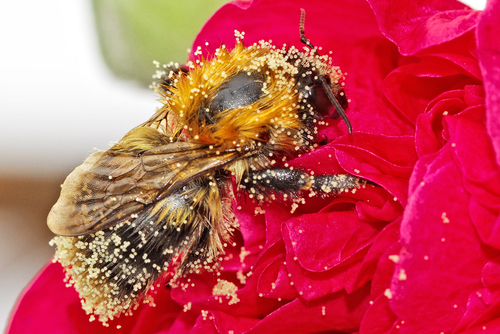Do you understand how flowering plants reproduce with help from insects or the wind?
There are two key processes we will focus on in this activity:
Pollination - When pollen is carried by insects or blown by the wind from one flower to another.
Fertilisation - When the nucleus of the pollen grain joins with the nucleus of the ovule.
Pollination helps the fertilisation of flowers by passing on their pollen.
Let's look in more detail together...
Pollination
During pollination, pollen is moved from the anther of one flower to the stigma of another on the backs of insects or by the wind.
Insect-pollinated flowers look very different from wind-pollinated flowers. This is because each type has adapted to transferring and receiving the pollen in this specific way.

But how can you tell if a flower is wind or insect-pollinated?
| Insect-pollinated | Wind-pollinated | |
| Brightly coloured petals? | Yes - to attract insects | No - not needed |
| Scented? | Yes, with nectar - to attract insects | No - not needed |
| Lots of pollen grains produced? | No, just a few - insect transfer is very efficient | Yes - most are lost in transit |
| Male part (anther) inside or outside flower? | Inside - to brush against insects as they feed on nectar deep inside | Outside - to release pollen easily |
| Female part (stigma) inside or outside flower? | Inside - to brush against insects and receive pollen grains as they feed on nectar deep inside | Outside - to catch drifting pollen grains easily |
Fertilisation
If a pollen grain (the male gamete) successfully lands on the stigma of a flower of the correct species, it will trigger a pollen tube to grow through the tissues of the flower until it reaches an ovule (the female gamete) inside the ovary. Once it reaches the ovary, the nucleus of the pollen grain joins with the nucleus of the ovule. This is fertilisation. Then, the fertilised egg develops into a seed.
That was a lot of information to take in! So, let's consolidate your knowledge by tackling some questions...
Over to you.
Want a bit more help with this before you begin? Why not watch this short video?









